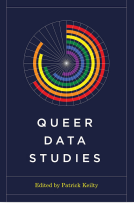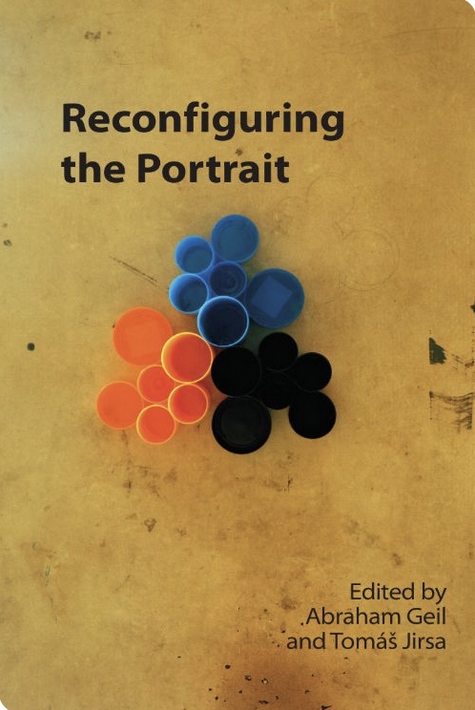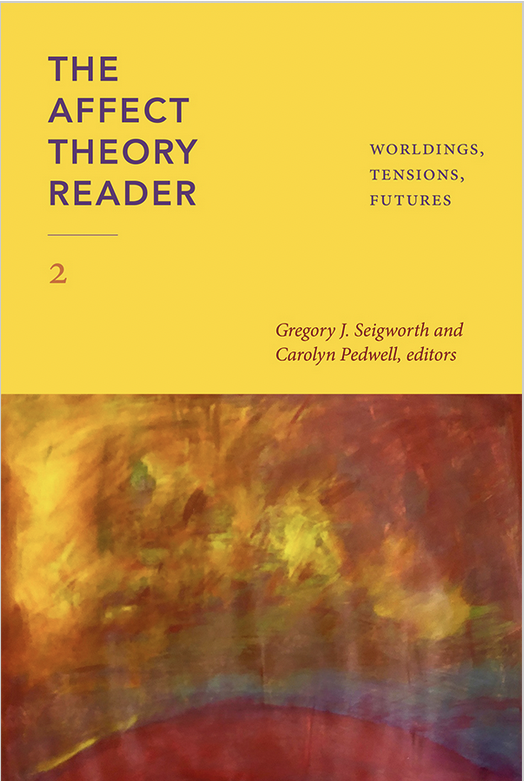 Our chapter with the marvelous Jenny Sundén, “Objectionable nipples: Puritan data politics and sexual agency in social media,” is newly out in Queer Data Studies edited by Patrick Keilty for University of Washington Press’ Feminist Technosciences series. As the title suggests, we are intrested in the politics of nipples in a context where nudity and sexual content are aggressively and horizontally deplatformed on leading social media platforms, also attending to Puritan underpinnings of content policies and the unwillingness of “free the nipple” activism to address sexual desire.
Our chapter with the marvelous Jenny Sundén, “Objectionable nipples: Puritan data politics and sexual agency in social media,” is newly out in Queer Data Studies edited by Patrick Keilty for University of Washington Press’ Feminist Technosciences series. As the title suggests, we are intrested in the politics of nipples in a context where nudity and sexual content are aggressively and horizontally deplatformed on leading social media platforms, also attending to Puritan underpinnings of content policies and the unwillingness of “free the nipple” activism to address sexual desire.
objectionable nipples
Filed under academic pleasures, data culture, feminist media studies, NSFW, sexuality
shifty meanings
My short article, Dick pics and the shifty meanings of porn, is freshly out with Porn Studies, and will be part of the journal’s tenth anniversary issue later this spring. The abstract goes like this:
Dick pics are ubiquitous objects in social media shared for the purposes of harassment, flirtation, suggestion, amusement, and titillation alike. Starting with the question of how dick pics are, or are not classifiable as porn, this article opens up lines of inquiry on the possibilities and limitations of porn as a genre marker, content classifier, and reference point in and for understanding sexual content distributed through networked means. In the contemporary moment when sexual content continues to multiply online even as most social media platforms vigilantly moderate and remove it, scholarly vocabularies risk either lagging behind or posing normative categorisation on the things published and shared, from dick pics to webcam shows and OnlyFans content. This article calls for contextual care in how the notion of porn becomes applied to networked sexual media, the shapes of continue to morph, as well as in how dick pics are made sense of as communication devices and cultural symbols.
Filed under porn studies, sexuality
cursed tweets
After quite a rocky history of rejects and revisions, our article with Elena Pilipets, Memetic commenting: Armenian curses and the Twitter theatre of Trump’s deselection, is out with The International Journal of Cultural Studies. Nice and quirky. With an abstract that goes like this:
On 7 November 2020, strange things were happening in the comments to @realDonaldTrump’s tweet erroneously arguing that he had won the US presidential election, ‘BY A LOT’. Posting quote tweets and replies in Armenian in tandem with ‘cursed images’, memes, and creepypasta, users engaged in a spam-like trollish intervention, even as Twitter kept removing the said content in real time. Exploring this online incident through various analytical techniques, this article first attends to absurdity and ephemerality within the polarized social media event. Second, it makes an argument for the productivity of digital methods in cultural studies inquiry aiming to understand the temporal, contextual, and infrastructural aspects of memetic commenting. Third, by focusing on the social (media) theatre of Armenian curses, we make a case for the analytical importance of studying materials deemed niche and anomalous in networked exchanges.
Filed under cultural studies, data culture, internet research
intimate infrastructures
An essay we did jointly with the IDA research team is freshly out with Media Theory’s special section edited by Carolyn Pedwell and Simon Dawes, “Lauren Berlant and Media Theory” (OA). Authored by Vilja Jaaksi, Anu Koivunen, Kaarina Nikunen, Karoliina Talvitie-Lamberg, Annamari Vänskä and myself, the piece is titled “Intimate infrastructures we depend upon: Living with data” and the abstract goes likes this:
This essay takes on Lauren Berlant’s mapping of intimacy as ‘connections that impact on people, and on which they depend for living’ in order to address attachments, dependencies, and vulnerabilities in datafied contexts where digital platforms operate as infrastructures of everyday life. Building on interview material, we explore such intimate attachments as ones rife with friction and inconvenience, asking how vulnerabilities emerge and become differently distributed among our study participants. We argue that thinking about the datafied everyday in terms of intimacy opens up space for considering the fundamental ambiguities involved in what matters to people, what they are attached to, and what they simply need to live with. We further suggest that attending to the complexity and vitality of mundane relating, impacting, and world-making offers ways of exploring techno-capitalist infrastructures of data extraction and mass surveillance in tandem with other attachments and connections that bind, and matter.
Filed under data culture, internet research, intimacy, media studies
vanilla normies and fellow pervs
Our article with Katrin Tiidenberg, Jenny Sundén and Maria Vihlman is out today on OA with Sexualities. Vanilla normies and fellow pervs: Boundary work on sexual platforms continues our study of local sexual platforms within the Rethinking Sexuality and Intimacy in Data-Driven Culture projects, paving way for our book on the topic currently under contract with MITP. The abstract goes like this:
Building on a study of three Nordic and Baltic digital sexual platforms, this article analyzes the perceptions of enjoyable sex and sexual belonging among 60 people, who self-identify as sexually liberal. In dialogue with Gayle Rubin’s formative work on sexual hierarchies and “good sex,” we explore our participants’ complex and often ambiguous sexual boundary work to delineate liberated sex. Independent of particular preferences (non-monogamy, BDSM, fetishism, and exhibitionism), liberated sex for our participants is definitionally enjoyable and articulated via an aspirational hierarchy based on willingness, diversity/variability, and self-reflexivity—partly set against national sexual imaginaries of vanilla normalcy, yet allowing vanilla some gradations and nuances.
Iiu Susiraja
 Reconfiguring the Portrait, edited by Abraham Gell and Tomáš Jirsa, is freshly out from Edinburgh University Press. It includes my co-authored chapter with Kaisu Hynnä-Granberg, titled Iiu Susiraja: self-shooting as playful practice. Focusing on the Instagram presence of the Finnish artist Iiu Susiraja in particular, our chapter explores the playful aspects of her work while also engaging in relations between self-portraits and selfies, body aesthetics, and the critical edge of ambiguity. The piece was a joy to write and we hope it does some justice to the general mood of Susiraja’s art.
Reconfiguring the Portrait, edited by Abraham Gell and Tomáš Jirsa, is freshly out from Edinburgh University Press. It includes my co-authored chapter with Kaisu Hynnä-Granberg, titled Iiu Susiraja: self-shooting as playful practice. Focusing on the Instagram presence of the Finnish artist Iiu Susiraja in particular, our chapter explores the playful aspects of her work while also engaging in relations between self-portraits and selfies, body aesthetics, and the critical edge of ambiguity. The piece was a joy to write and we hope it does some justice to the general mood of Susiraja’s art.
Filed under academic pleasures, feminist media studies, humor, play
the affect theory reader 2/WTF

The Affect Theory Reader II: Worldings, Tensions, Futures, edited by Gregory J. Seigworth and Carolyn Pedwell for Duke UP, is just out. Quite the whopper, with contributions from Lauren Berlant, Kathleen Stewart, Lisa Blackman, Ann Cvetkovich, Jasbir K. Puar, Erin Manning Adam Frank and Elizabeth A. Wilson, and a whole bunch of others. My piece, titled “Ambiguous affect: excitements that make the self” makes an argument for the critical edge of ambiguity in the context of data culture aiming to aggregate and analyse feeling similarly to any other user data. Writing it, I got very stuck at one point and Greg and Carolyn exemplified academic generosity in helping me become un-stuck. Kudos.
Filed under academic pleasures, affect theory, data culture
interview on affect and ambiguity
The new issue of MAST is out, edited by Tony D. Sampson & Jernej Markelj: it also includes an interview that Jernej and Claudio Celis Bueno did with me, titled “Ambiguity and Affect in Digital Culture“. This took quite a bit of thinking and the kind of retrospection I seldom do: quite the pleasure!
Filed under academic pleasures, affect theory, data culture
Yul is out, out in the world!
 My pandemic refuge project, Yul Brynner: Exoticism, Cosmopolitanism and Screen Masculinity, is very freshly out. A Yul project was something I toyed with for years before eventually penning an article (out in Screen in 2019); without COVID-19 lockdowns, it is unlikely that I could have found the time for the kind of archival work that this book took. Trust me on this: both immersive and extensive.
My pandemic refuge project, Yul Brynner: Exoticism, Cosmopolitanism and Screen Masculinity, is very freshly out. A Yul project was something I toyed with for years before eventually penning an article (out in Screen in 2019); without COVID-19 lockdowns, it is unlikely that I could have found the time for the kind of archival work that this book took. Trust me on this: both immersive and extensive.
It has been a pleasure to work with Edinburgh University Press and the editors of the International Film Stars series on this. Having opened the book on many a page by now, I have not noticed a typo yet. A personal first. A more affordable paperback version should be out in 2024; the 30% discount code NEW30 for the HB one may or may not still work.
Filed under academic pleasures, media history
kinky, leaky, opaque
A column that was very much fun to write: Kinky, Leaky, Opaque: Sexual Intimacies and Data for ACM’s Interactions with the marvelous Jaz Hee-jeong Choi, and with an illustration from Martyne Miller. Starts with an anecdote of me showing Jaz a visual example of sneaker fucking over dinner (classy) and thinks through technology, sex and domestic space.
Filed under academic pleasures, data culture, sexuality
